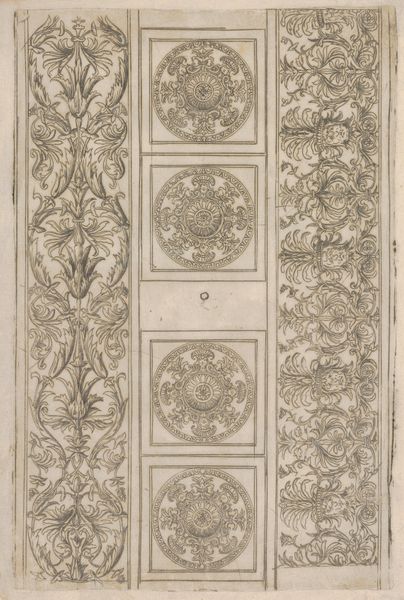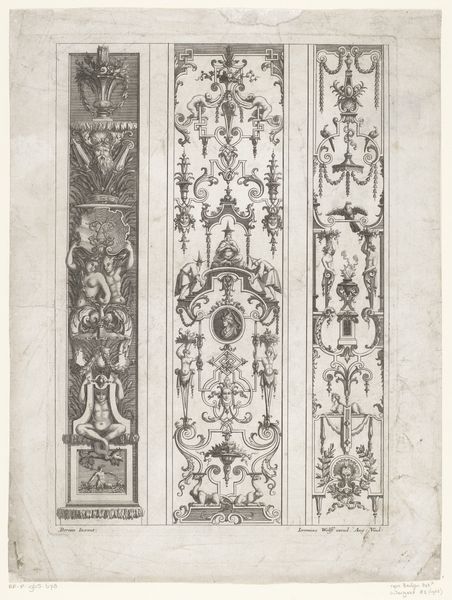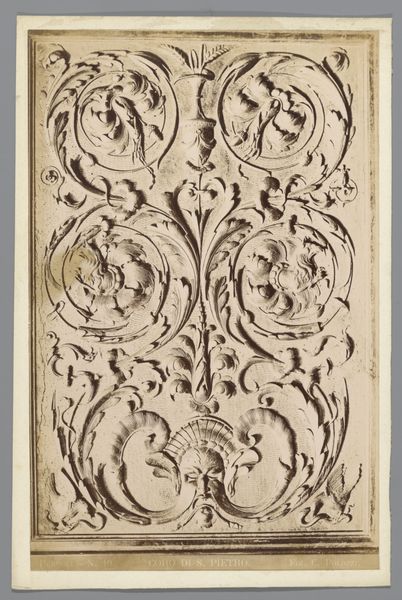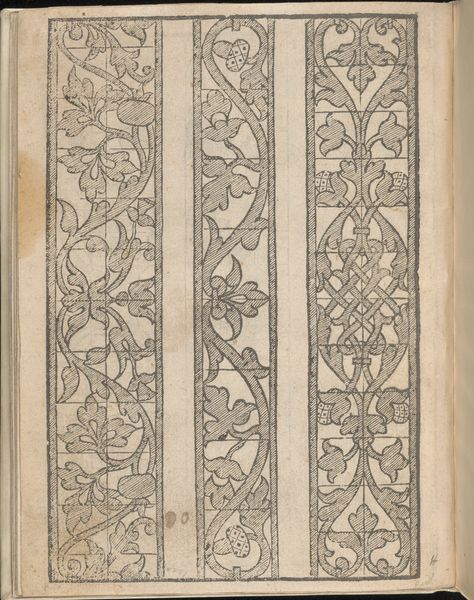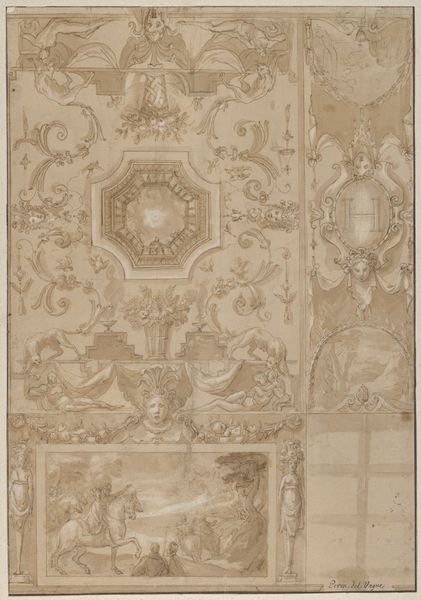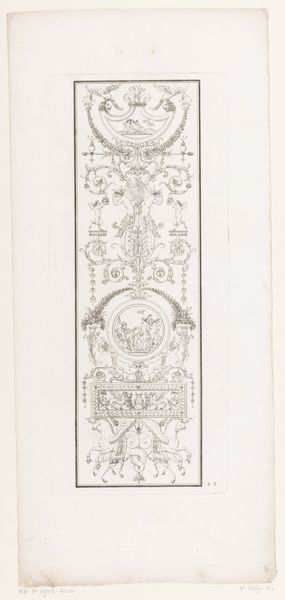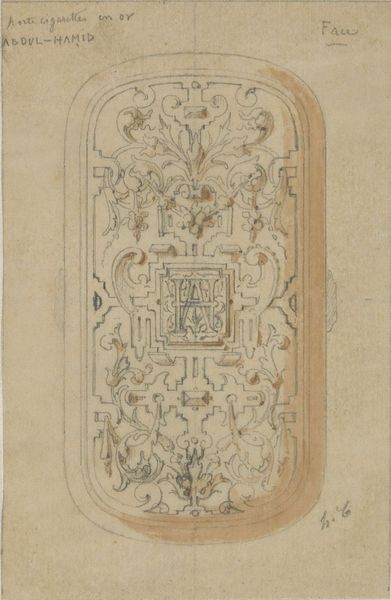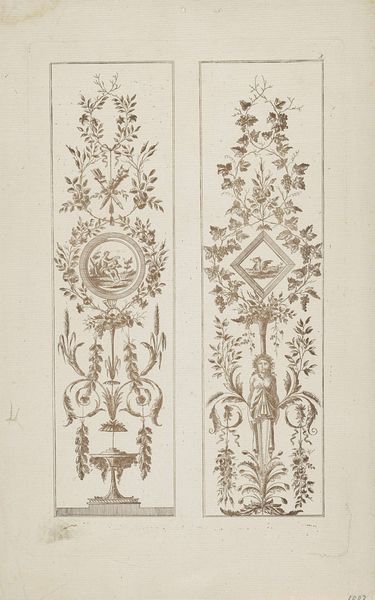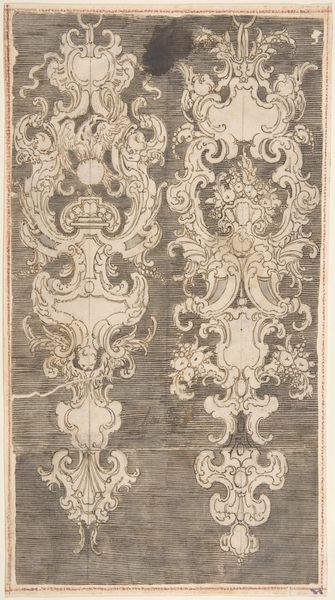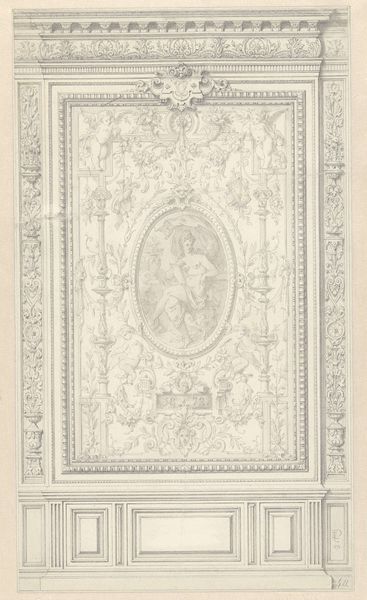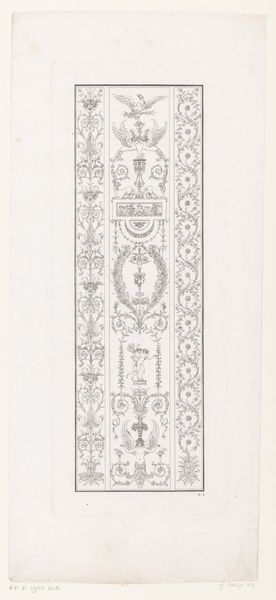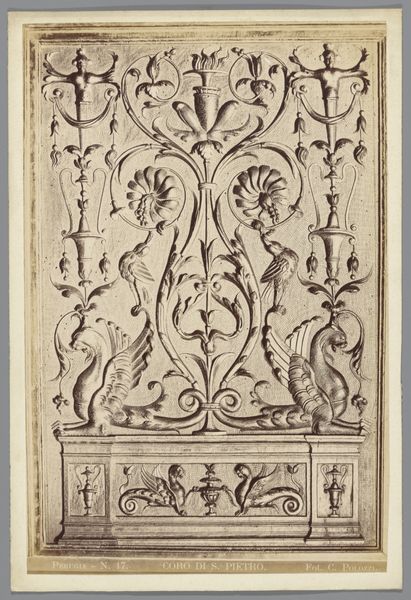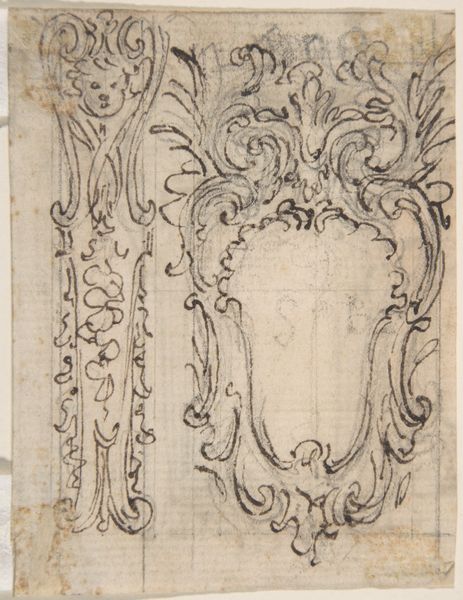
Design for Three Upright Panels of Ornament Arabesques 1700 - 1800
0:00
0:00
drawing, ornament, print, paper, engraving
#
drawing
#
ornament
#
toned paper
#
baroque
# print
#
white palette
#
paper
#
history-painting
#
engraving
Dimensions: 8 7/8 x 6 9/16 in. (22.5 x 16.7 cm) - torn center and mended
Copyright: Public Domain
Editor: This is "Design for Three Upright Panels of Ornament Arabesques," created between 1700 and 1800 by an anonymous artist. It’s an engraving, a print, and a drawing, all on paper. It’s full of tiny figures nestled amongst these swirling, fantastical, floral forms… How do you interpret this work? Curator: This work presents a fascinating window into the power dynamics embedded within the decorative arts. Think about it: these arabesques were intended to adorn elite spaces. Ornament, at that time, was a signifier of power and privilege. What does it mean when images of people, often rendered as mythological or allegorical figures, are literally embedded in systems designed to showcase wealth? Editor: So, the decoration isn’t just about beauty? Curator: Not at all! This kind of ornament reinforced existing social hierarchies. The artist, while anonymous, was participating in the construction of visual rhetoric that served specific class interests. Even the seemingly innocent floral motifs are coded; think about the cost of exotic plants, the labor needed to cultivate gardens during this period. Who was excluded from enjoying and producing such beauty? Editor: That's a perspective I hadn't considered. It makes you wonder about the stories we *don't* see in these images. Curator: Exactly! Art history, at its best, prompts us to ask those difficult questions. And consider, too, the history of the printing press as technology, the mass reproduction and dissemination of images and their effects in a period rife with cultural conflicts and class inequalities. Who had access and agency? Editor: That’s true; thanks to printmaking, many of the privileged could get their own versions of these decorative pieces and art… I see a different, critical, perspective on seemingly beautiful ornamentation now. Curator: Precisely! And it pushes us to investigate art through a social justice lens.
Comments
No comments
Be the first to comment and join the conversation on the ultimate creative platform.
